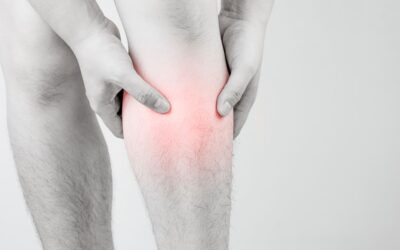Introduction
Sciatica is a term that strikes a chord of dread in those who have experienced its signature pain and discomfort. Characterised by pain that radiates along the path of the sciatic nerve—from the lower back down through the leg—sciatica is a common yet often misunderstood condition.
This comprehensive guide will explore what sciatica is, its common symptoms and causes, and effective ways to manage and treat it, helping you return to your normal activities with less pain and improved mobility.

Image credit: Ankle Stock photos by Vecteezy
What is Sciatica?
Sciatica refers to pain that radiates along the sciatic nerve, which is the longest nerve in your body. It starts from the nerve roots in your lumbar spinal cord in the lower back and extends through the buttocks area to send nerve endings down the lower limb. The discomfort associated with sciatica can vary from mild aches to sharp, burning sensations, or even excruciating discomfort that can incapacitate an individual temporarily.
Signs and Symptoms of Sciatica
The primary indicator of sciatica is pain that radiates from your lower spine to your buttock and down the back of your leg. The characteristics of this pain can vary:
Intensity and Type:
The pain may be sharp, dull, burning, or accompanied by intermittent shocks of shooting pain beginning in the buttock and travelling downward into the leg or foot.
Response to Activities:
It may worsen when you sneeze or cough, and prolonged sitting can aggravate symptoms.
Physical Sensations:
Numbness, tingling, and muscle weakness may also be present in the affected leg and foot.
One-Sided Symptoms:
Typically, only one side of your body is affected.
Understanding these symptoms is crucial as they play a pivotal role in diagnosing sciatica and distinguishing it from other types of back pain.
Common Causes of Sciatica
Sciatica is often a symptom of other medical conditions rather than a medical condition on its own. Some of the common causes include:
- Herniated Disc: The most common cause, where a disc in the spine presses on the sciatic nerve.
- Spinal Stenosis: Narrowing of the spinal canal, which can put pressure on the nerves.
- Spondylolisthesis: A condition where a vertebra slips over another one.
- Piriformis Syndrome: When the piriformis muscle, located in the buttock region, spasms and irritates the sciatic nerve.
- Spinal Injuries or Infections: Physical impacts or medical conditions that affect the spine can also lead to sciatic pain.
Identifying the underlying cause is essential for effective treatment and management.

Image credit: Person Stock photos by Vecteezy
Treatment and Management of Sciatica
The treatment for sciatica depends largely on the severity of the pain and the underlying cause:
1. Self-Care Measures:
For mild sciatica, self-care measures might be recommended as the first line of treatment:
- Physical Activity: Keeping active is key. Bed rest is not recommended as it can worsen symptoms. Gentle exercises like walking or light stretching can help.
- Pain Medication: Over-the-counter pain relievers such as ibuprofen can be used to manage pain and inflammation.
2. Physical Therapy:
Once the acute pain improves, physical therapy can be an effective way to prevent future injuries. A physiotherapist can teach you exercises to strengthen the muscles supporting your back, improve your flexibility, and correct your posture to alleviate stress on your lower back.
3. Professional Medical Treatments:
If symptoms persist or worsen, medical treatments may be necessary:
- Corticosteroid Injections: These can help reduce nerve inflammation and alleviate pain.
- Surgery: This is typically reserved for cases where the compressed nerve causes significant weakness, loss of bowel or bladder control, or if pain progressively worsens. Common surgeries include microdiscectomy or lumbar laminectomy.
Preventive Measures
Preventing sciatica involves promoting back health through:
- Proper Lifting Techniques: Always lift from a squatting position, hold the load close to your body, and never twist your body while lifting.
- Good Posture: Maintain good posture when sitting, especially if you sit for long periods. A supportive chair and ergonomic office set-up can help.
- Regular Exercise: Regular physical activity can keep your back strong and might reduce the risk of sciatica recurring.
Conclusion
Sciatica can be a debilitating condition, but with the right knowledge and approach, it can be managed effectively. Understanding the symptoms, causes, and treatment options is key to managing this condition, reducing pain, and improving quality of life. If you suspect you have sciatica, consulting
with a healthcare professional for a proper diagnosis and treatment plan is crucial. With appropriate management, most people recover from sciatica and lead active, healthy lives.
Further Information
For more detailed information about sciatica or to consult with a specialist, feel free to contact our clinic. We are here to help guide you on your path to recovery and pain-free living. See more info here.




